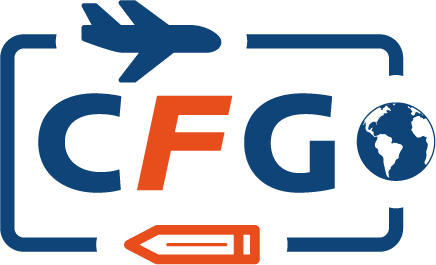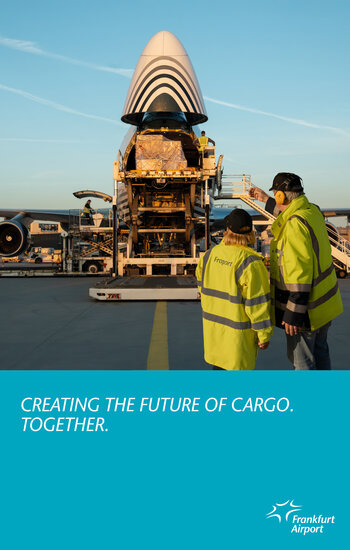The Luxembourg-based developer of a cutting-edge message handling software and transmission technology is celebrating its 15th birthday. Right from the start, EDIfly’s open architecture has allowed seamless integration with existing IT ecosystems including Amadeus, SITA, Collins (ARINC), or LH Systems, fostering innovation across the industry. What began 1.5 decades ago with Cargolux as launching customer, has now evolved into a global community of users. In addition to the aviation landscape, authorities also rely on the tech provider’s messaging tool featuring state-of-the-art encryption.
If anyone deserves a knighthood for founding EDIfly, it is visionary Anders Dam Jensen. Back in 2010, the Danish national set out to solve a persistent problem in aviation communications: the inefficiencies and costs associated with legacy Type B messaging. His invention, EDIfly, was designed as a backwards-compatible platform that modernized data exchange while maintaining interoperability with industry-standard protocols and systems. Jensen’s vision was to create an open, secure, and cost-effective alternative based on open-source components, that would future-proof airline messaging without disrupting established workflows in a globalized aviation industry.

Game-changer
Cargolux became the launching customer and achieved operational savings and improved reliability from day one. Henrik Ambak, who then served as Cargolux’s VP of Cargo Operations and later held leadership roles at Emirates Airlines, recalls: “EDIfly gave us the confidence to modernize our communications without losing touch with partners still reliant on legacy systems. Its reliability and seamless integration were game changers for our operations.” EDIfly’s success at Cargolux quickly caught the attention of other airlines, airports, and aviation service providers. The technology’s backwards compatibility meant organizations could upgrade their messaging infrastructure at their own pace, without risking disruptions to critical operations. Over a period of 15 years, EDIfly has been adopted by a wide range of aviation stakeholders, from passenger airlines to airports, ground handlers, cargo carriers and government authorities. EDIfly’s most significant contributions have been its role in supporting the airline industry’s digital transition, enabling airlines to move beyond traditional ticketing and embrace dynamic, customer-centric retail models based on Offer & Order.

Overcoming Type B messaging limitations in cargo, passenger & MRO
Most importantly, the technology achieves this while remaining backwards compatible with legacy Type B communication – a critical requirement for airlines navigating the complexities of digital transformation. Type B Communication Drawbacks and the June 2024 White Paper issued by The International Air Transport Association – IATA (https://www.iata.org/contentassets/badbfd2d36a74f12b021c9dd899ecbad/type-b-messaging-whitepaper-v2.5.pdf) has long identified limitations in the industry’s reliance on Type B messaging, including high costs, inflexibility, transmission capacity and security vulnerabilities. In its 14JUN25 White Paper, IATA reiterated these concerns and called for urgent modernization of aviation communications. EDIfly directly addresses these drawbacks by offering the market a secure, cost-effective, and interoperable alternative. The preliminary conclusion so far is that its adoption has helped organizations comply with evolving IATA recommendations while minimizing operational risk and investment. In its initial version 2.1, IATA mentions EDIfly as a mechanism for airlines to avoid SITA and ARINC and their high charges. In the updated version 2.5 from MAY25, this paragraph has miraculously disappeared. Industry experts have consistently applauded EDIfly’s reliability and integration capabilities. Henrik Ambak notes, “The beauty of EDIfly is that it bridges the old and the new. We could innovate and integrate with modern platforms without losing connectivity to our partners.” Paul Heber, formerly with Amadeus and now at T2RL, adds, “EDIfly has set a new standard for secure unconstrained messaging in aviation. Its flexibility has been instrumental in driving digital transformation across the sector.” Tjutjuk Septiadi, CEO of ESI Jakarta, highlights the global reach: “EDIfly’s low-cost, scalable model has opened new possibilities for airlines, airports, and even governments in emerging markets. It’s not just a technology – it’s a catalyst for industry-wide progress, which allowed us to create an EDIfly-based ecosystem across most aviation-related exchanges in Indonesia.”

Global reach
Kicked off 15 years ago, EDIfly’s adoption has since spread far beyond Europe, with implementations in Asia, Africa, the Americas, and Australasia. As confirmed by developments to date, the system’s cost efficiency and ease of integration have made it an attractive option for organizations seeking to modernize operations without incurring prohibitive expenses. “For a growing number of users, EDIfly represents the first viable alternative to proprietary, high-cost legacy networks, democratizing access to advanced messaging capabilities and fostering a more competitive, collaborative global aviation ecosystem that avoids a complex end-to-end integration like IATA’s OneOrder or ONE Record, expected to be implemented over the next 10-15 years,” Ingo Roessler, Chief Commercial Officer of EDIfly, states. According to a recent study by the UK consultancy T2RL the industry spends about one billion USD annually for transmission through networks, managed fixed links, and related infrastructure to handle Type B exchanges. If the aviation community adopted this peer-to-peer principle widely, cost savings of more than 80% could be achieved In a nutshell: Fifteen years after its inception in Luxembourg, EDIfly has left an indelible mark on aviation as a driver of the industry’s transformation and modernization. In line with its commitment to data security and trust, EDIfly has also partnered with SeeZam, another Luxembourg-based innovator specializing in secure digital exchange and notarization of sensitive information. This collaboration further reinforces Luxembourg’s position as a hub for secure, cutting-edge aviation technology. It is to be expected that further chapters will be added to the company’s success story during the forthcoming 15 years.




